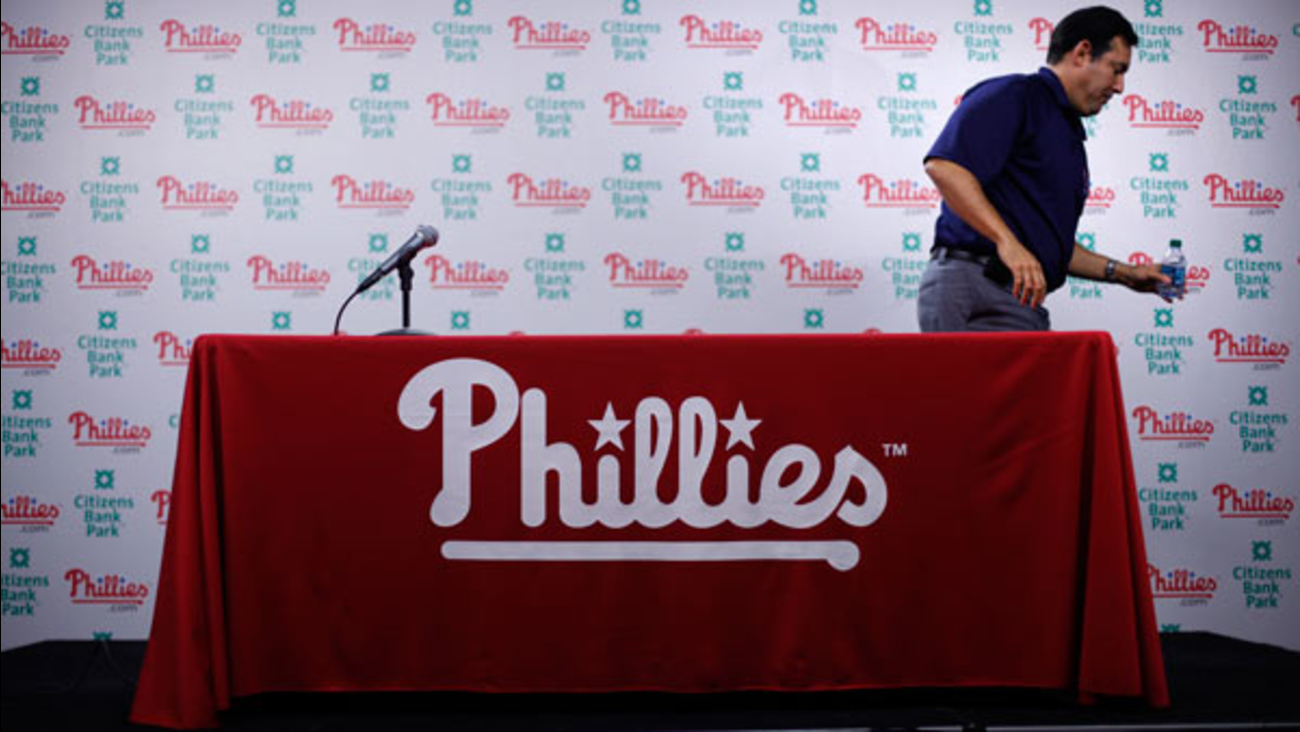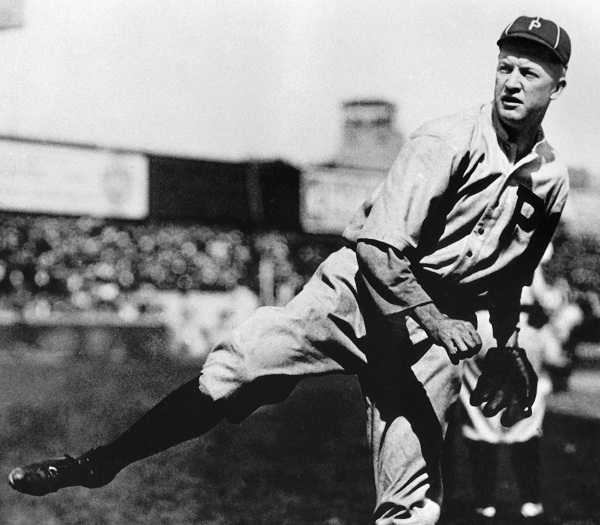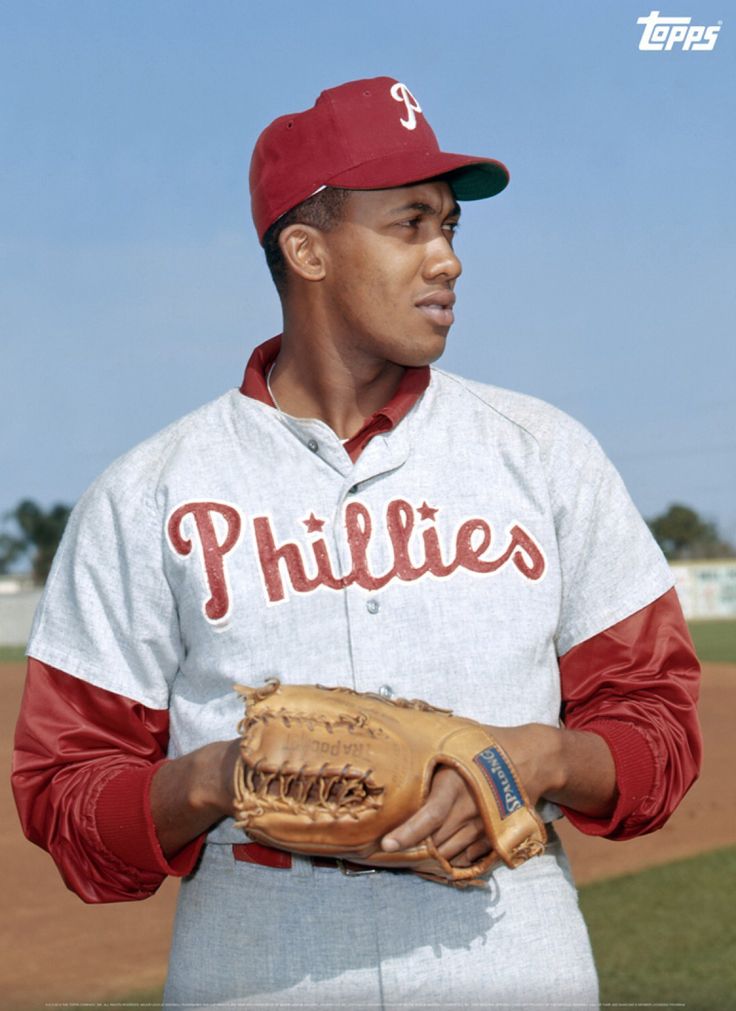Top 5 worst trades in Phillies team history

Source
It's been great to have a full schedule of Major League Baseball again this year after last season's shortened schedule joke. Of course full schedule or not, one thing baseball fans can always count on is my Philadelphia Phillies pissing off their fan base by under performing. Good Grief.
This is the time of the season when I foolishly try to convince myself that all hope is not lost, maybe the Phils can save their year by pulling off a few shrewd trades before the trading deadline at the end of July. Then I think about Philly's history in making deals and start to cry.
The Phillies organization has a long history of phutility in MLB. Over the years they have made some of the worst trades in the history of baseball. In this post I'm going to rank the worst 5 trades the team has ever made. The only trades I don't take into consideration are the ones made to move an impending free-agent the team couldn't or wouldn't re-sign anyway. Those deals rarely pan out because everyone knows the team is willing to give up talent for pennies on the dollar in order to receive something instead of nothing. I'm looking at deals where the team has completely misjudged either their own talent or the talent of players from other clubs.
Be forewarned, these deals are gruesome. Only those with strong stomachs or who hate Philadelphia should continue. You've been warned.
#5 Von Hayes 5 for 1

Source
The "Pope" Paul Owens was a great general manager for the Phillies in the 1970's who made the best trade in Phillies history (Steve Carlton for Rick Wise, thanks Cardinals!) and molded the roster for the organization's first ever World Series title in 1980. But by the early 1980's he lost his mojo and made some of the worst deals in franchise history.
In 1982 Von Hayes was a 24 year old outfielder with the Cleveland Indians. The Phillies front office felt he had enormous potential and gladly traded 5(!) players for his services. That was a miscalculation. Three of those guys amounted to a hill of beans, a fourth was an aging Manny Trillo who had some productive years left, but the fifth was a young Julio Franco.
Franco went on to have a 23 year career at SS, 2B and DH with an impressive .298 batting average and 2586 hits. He was an all-star caliber SS in the 1980's when the Phillies used jabronis like Ivan DeJesus, Steve Jeltz and Luis Aguayo to fill the position. He was sorely missed.
And Von Hayes? He never lived up to the 5-1 hype surrounding his entrance to Philadelphia. Hayes had one good year in 1986 (.305, 19 HR, 98 RBI, 107 runs), but for the most part was a mediocre outfielder who hit .267 with 1402 hits in 12 seasons. The Phillies dealt him to the Angels in 1991 and when asked by reporters about the deal Lenny Dykstra replied with "Great trade! Who did we get?" That pretty much sums up his time in Philly.
#4 Cliff Lee for a bunch of crap

Source
Only G.M. Ruben Amaro Jr. (fondly remembered as Ruin Tomorrow Jr. in Philadelphia) could crank out his best and worst trades on the same day. Damn I hate that guy.
In 2009 the Phillies were trying to defend their World Series title, but the pitching staff was lagging. The Phillies and their fans wanted Roy Halladay from Toronto since he was available and just happened to be the best pitcher in the American League. Toronto's asking price included pitching prospect Kyle Drabek, which Amaro refused to give up. Instead he acquired Cliff Lee from the Cleveland for Carlos Carrasco and some throw ins. Yep that Carlos Carrasco. Anyway Lee pitched well down the stretch and the Phillies won the pennant, but failed to win the World Series.
The 2009 offseason is where the train left the tracks. Amaro had a change of heart and decided Roy Halladay was worth giving up Kyle Drabek for so he pulled the trigger on the deal. Wow! Now we had Roy Halladay and Cliff Lee at the top of the rotation! For a minute. For reasons only he could understand, Amaro decided one ace was good enough and traded Cliff Lee to the Mariners for 3 "prospects": P Phillippe Aumont, P J.C. Ramirez and P Tyson Gillies.
I'm not kidding when I referred to that haul as a bunch of crap. Aumont went 1-6 with a 6.80 over several seasons, Ramirez had a cup of coffee as he went 0-1 with a 7.50 era in 2013 and Gillies never made it out of the minor leagues. All Cliff Lee did was pitch great for Seattle before he was traded to the Rangers, who he led to the American League Pennant.
The Phillies made it to the NLCS in 2010, but lost to the Giants. Having another superstar pitcher sure would have helped. Amaro felt the heat and signed free agent Cliff Lee to a big contract in the 2010 offseason. If he never let him leave in the first place, the Phillies might have another championship.
#3 Grover Cleveland Alexander for "Pickles"

Source
We have to go way back in time for this one, but it needs to be included because it was a doozy. Grover Cleveland Alexander is one of the greatest pitchers ever. How great? 373 career wins, tied for 3rd place all-time. He won 28 games in his rookie year of 1911, the modern day record. Nobody's doing that today.
From 1915 to 1917 he might have had the best three year stretch as a pitcher ever.
1915: 31 wins 1.22 ERA 12 shutouts
1916: 33 wins 1.55 ERA 16 shutouts (single season record to this day)
1917: 30 wins 1.83 ERA 8 shutouts
Obviously this is the kind of pitcher you could build a winning team around. The problem was Phillies owner William Baker was broke. He needed cash and Alexander was his #1 asset. A straight up sale would look like the desperate move it was so he concocted a trade with the Chicago Cubs. Baker sent Alexander and his favorite catcher Bill Killefer to the Cubs for pitcher Mike Prendergast, catcher "Pickles" Dillhoeffer and $60,000.
Alexander won 128 games for the Cubs before they sent him to the Cardinals where he pitched two complete game victories and saved game seven in the 1926 World Series over the Yankees.
Prendergast pitched two season with the Phils, earning a 13-15 record despite a decent 3.20 ERA. And Pickles played one year for the Phils, he had one hit in eleven at bats. The money lasted longer than these two.
#2 Ferguson Jenkins for two old farts

Source
This horrendous trade was a by-product of the infamous 1964 collapse of the Phillies. For Phillies fans 1964 is the worst year in the entire history of the planet. The team blew a 6 and 1/2 game lead with 12 games to play.
The Phillies followed that disaster with a 85-76 record and a sixth place finish in 1965. G.M. John Quinn and manager Gene Mauch were getting desperate to win the elusive pennant before it was too late. Since they worked for the Phillies, they made the absolute dumbest move possible.
The Phillies needed more starting pitching to get over the top. They had a top pitching prospect in Fergie Jenkins, but for reasons unknown Mauch wasn't impressed by him. Jenkins pitched out of the bullpen in 1965 & 1966 for 14.2 innings, compiling a 2-1 record with a 2.45 ERA, 1 save and 12 strikeouts. No matter, Mauch, who apparently wouldn't recognize pitching talent if it bit him in the ass, persuaded Quinn to trade Jenkins for older pitchers during the 1966 season. Quinn complied by sending Jenkins and some scrubs to the Cubs for veteran starters Bob Buhl and Larry Jackson. This deal would haunt the Phillies for years.
Fergie Jenkins blossomed into a star with the Cubs. Starting in 1967, he would win 20 or more games in 6 consecutive seasons. In 1971 he won the NL Cy Young award. After a down year in 1973, he was dealt to the Rangers and won 25 games in 1974. All told he won 284 games in his career with 3192 strikeouts and was elected to the Hall of Fame in 1991.
Larry Jackson was 35 years old when he came to Philly. He went 41-45 in three seasons before he retired. The Phils got even less out of Bob Buhl. Buhl was 38 years old at the time of the deal. He went 6-8 in two seasons before he retired.The Phillies didn't bring home another pennant until 1980, when Quinn and Mauch were long gone.
#1 The throw-in Ryne Sandberg

Source
This trade was a failure at all levels. Not only did the Phillies over estimate the talent on another team, they failed to see the Hall of Fame talent residing in their own farm system. And once again it was the Cubs who fleeced the Phils. Damn it Chicago, I hope you go another 108 years before you win again.
The Phillies won the World Series in 1980 and made the playoffs in 1981, but the roster was starting to get old and expensive. G.M. Paul Owens needed to make some moves to inject some youth into the roster while saving a few bucks. 36 year old shortstop Larry Bowa wanted a new contract and the Phillies didn't want to pay him so they put him on the market.
Dallas Green had just left the Phillies to take the G.M job with the Cubs. He needed a veteran shortstop with a slick glove so he offered Owens the Cubs 28 year old shortstop Ivan DeJesus in exchange for Bowa. DeJesus batted a career low .194 in the strike shortened 1981 season and wasn't known for his defense, but Owens agreed anyway. That trade would have been bad enough, but Green, sensing weakness from his former boss, pushed the envelope to turn it into the worst trade in Phillies history.
Green told Owens it was unfair for Chicago to trade a player in his prime years for an older one straight up. He needed the Phils to kick in a prospect to even things out. And he had one in mind: Ryne Sandberg.
Sandberg was drafted by the Phillies in 1978 out of high school as a shortstop. In the minors he hit for good averages and showed base stealing ability, but his power was slow in developing. Plus the Phillies realized he wouldn't make the grade as a major league shortstop defensively. So they moved him to third base, where his path to the majors was blocked by Mike Schmidt. Green saw the potential in Sandberg and knew his former team wasn't sure what to do with him.
Paul Owens agreed to Green's request and that is how the Cubs acquired their Hall of Fame second baseman, as a throw-in as part of a deal between an over-the-hill shortstop and a crappy one in his crappy prime. DeJesus played in Philly for three seasons, never hitting above .257 while his base running and defense slipped alarmingly fast.
Larry Bowa didn't hit much for the Cubs, but he was a significant upgrade defensively. Ryne Sandberg went on to win the 1984 NL MVP and become the all-time home run leader among second baseman (since broken) while winning 9 Gold Gloves before he was elected to the Hall of Fame in 2005.
There you have it, the worst 5 trades in Philadelphia Phillies history. The next time your favorite team makes a dumb move, refer to this list and think "well, at least we aren't as bad as the Phillies".
Thanks for reading and feel free to make any comments below. Don't be afraid to dump on the Phils, I've been doing it for years. In fact I had a flashback while writing to the days when a young Chops booed Ivan Dejesus and Von Hayes at the Vet. Good Times.
@tipu curate
Upvoted 👌 (Mana: 11/22) Liquid rewards.
Congratulations @chops316! You have completed the following achievement on the Hive blockchain and have been rewarded with new badge(s) :
Your next target is to reach 90 posts.
You can view your badges on your board and compare yourself to others in the Ranking
If you no longer want to receive notifications, reply to this comment with the word
STOP